Peak-season tomatoes may taste great, but their high moisture content can be challenging if the goal is a summery tart.
Some tomatoes, in fact, are up to 90 percent water, much of which leaches out in the oven and makes a crispy crust almost impossible. Seeking to take advantage of the season’s finest but avoid a soggy mess, we rethought tomato tarts from top to bottom, starting with how to treat the tomatoes, then turned it all upside down.
We used several tricks to reduce tomatoes’ moisture while also concentrating their sweet-tart flavors—namely slicing, salting, draining, patting, shingling and finally roasting—all before we even got to the crust. But really, it’s not as complicated as it sounds.
Plum tomatoes, also called Romas, are the best variety for this recipe because of their low water content, about 60 percent (the same reason they’re the preferred tomato for marinara). We knew we wanted to roast them before adding them to the tart—this not only bakes off moisture, it also concentrates their flavor—but first we needed to determine the best way to slice them. We liked the ease of simply halving the tomatoes, but the pieces took too long to cook, and the large strips of skin became tough and unpleasant. We found that half-inch crosswise slices worked far better.
We also salted the tomato slices and let them sit a bit before roasting. The salt draws out moisture, so the tomatoes go into the pan with less water to start. Patting them dry also removed surface moisture, so the flavors concentrated better during roasting. Finally, shingling the slices in the pan—use a glass pie plate, as a metal one can produce off flavors by reacting with the tomatoes’ acidity—allowed us to maximize the volume of tomatoes in the tart.
We tried using a classic tart construction—line a pie plate with pastry, then top it with the roasted tomatoes and bake it. But even after all we did to reduce the moisture in the tomatoes, we still ended up with a soggy bottom. Even a layer of fresh goat cheese between the tomatoes and the crust didn’t keep it crisp.
That’s when we got the idea to flip things around. We already had our tomatoes layered in a pie pan for roasting, why not leave them there? Instead of putting the tomatoes on top of the pastry, we put the pastry on top of the tomatoes, a lesson we borrowed from the classic tarte tatin, which cooks the crust on top, then inverts the tart out of the pan right side up. This prevents any juices from pooling on the crust during cooking and allows it to get richly browned.
But we weren’t quite done with the cheese. Rather than create a layer of cheese, we added low-moisture Parmesan directly to the pastry, an easy step with the food processor. Its high melting point means it holds its structure, giving the crust a crisper crumb and a wonderful savoriness. Similar dry cheeses such as pecorino Romano, grana padano or even aged manchego also work.
Once the tart came out of the oven, we inverted it onto a plate to serve, sprinkling fresh thyme on the tomatoes for an additional layer of herbal flavor. Savory, sweet and not the least bit soggy.
Upside-Down Tomato Tart with Parmesan Pastry
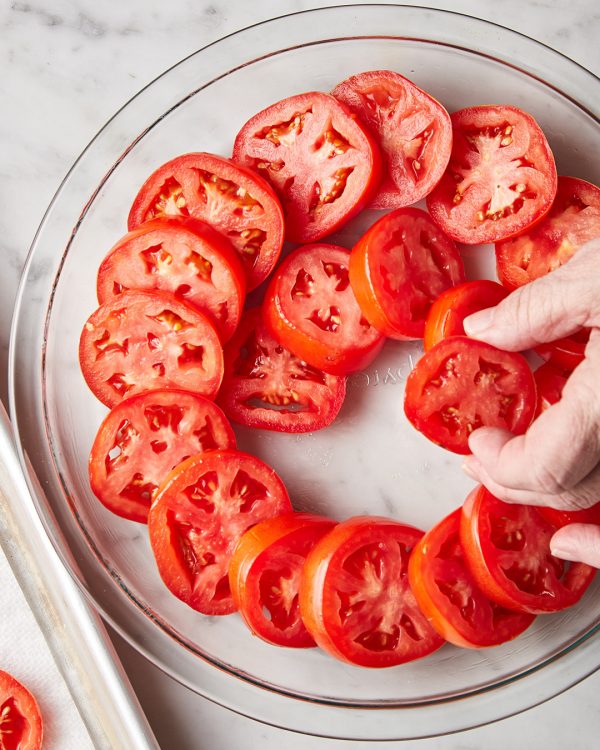
1. Drain the salted tomato slices in a colander, then pat them dry. In a lightly greased glass pie plate, shingle the tomatoes in concentric circles, packing them tightly.
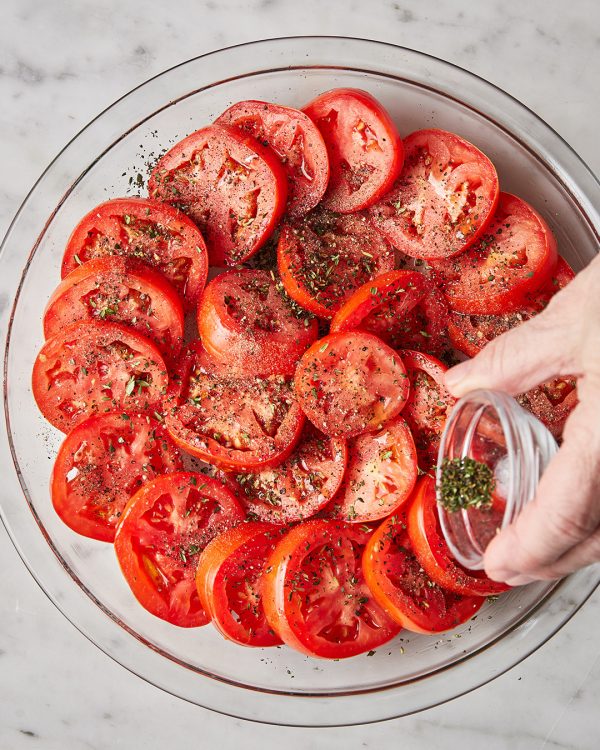
2. Sprinkle the tomatoes with 1 teaspoon thyme and ½ teaspoon pepper, then drizzle with 1 tablespoon oil. Bake the tomatoes until softened, 30 to 40 minutes.
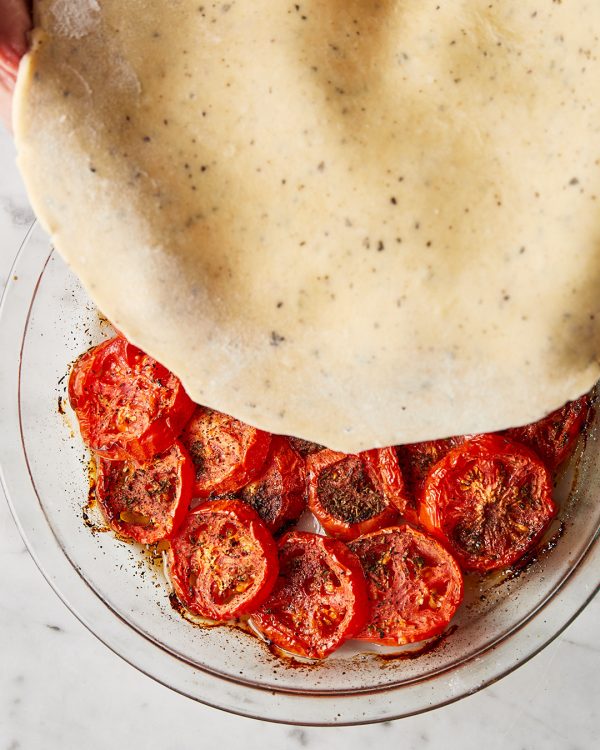
3. After the dough has chilled for at least 30 minutes, remove from the refrigerator and roll it into a 10-inch circle, lightly dusting the dough with flour as needed.
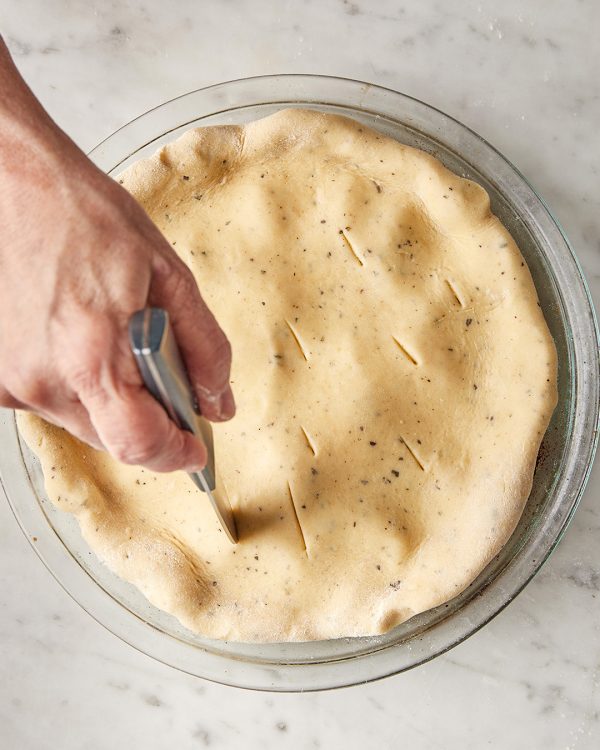
5. Using a paring knife, make slits 1 inch apart all over the dough and all the way through. Bake until the crust is deeply browned and juices are bubbling at the edges.
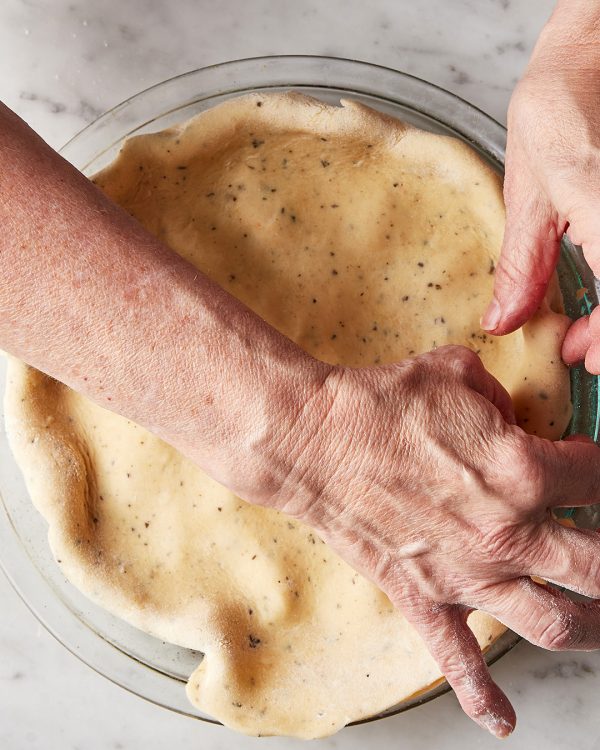
4. Lay the rolled-out round of dough on top of the tomatoes, gently pressing it with your hands, then fold and tuck the edges of the dough inside the pie plate.
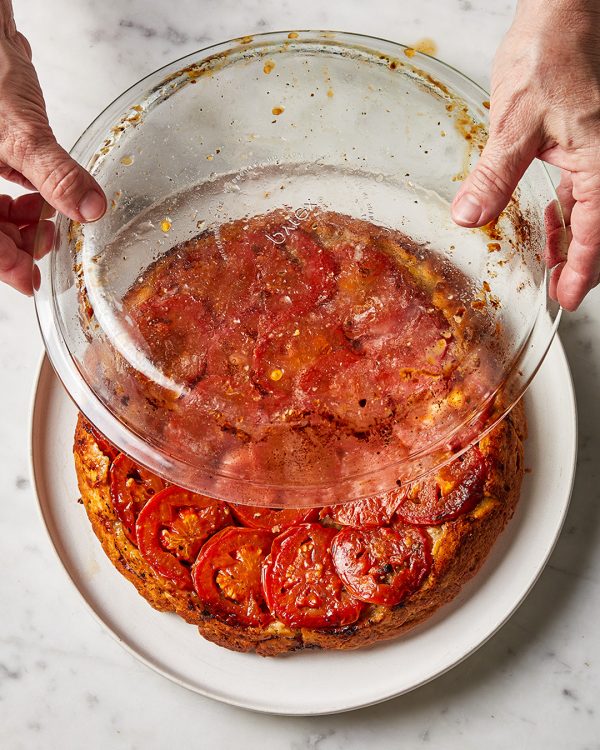
6. After gently loosening the edges of the tart, let it cool for 30 minutes. Invert a platter onto the pie plate and, holding them together, carefully re-invert. Lift off the pie plate.







